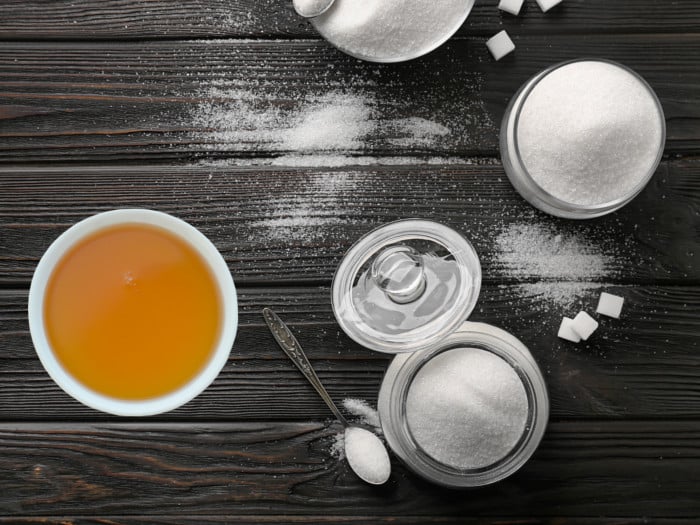Agave vs sugar is a common debate in the world of sweeteners, and there are some clear differences between these two popular options
Agave vs Sugar
While these two sweeteners achieve the same purpose, they are far from the same thing.
How Are They Made?
- Agave nectar is derived from the blue agave plant. [1]
- Table sugar is often made from sugarcane or beets.
Texture
- Agave nectar is a viscous liquid, sticky, but not as thick as honey.
- Table sugar commonly comes in the form of individual granules.
Nutrition
- Agave is composed of between 50% and 90% fructose. It contains vitamin C, iron, calcium, and dietary fiber.
- Table sugar is composed of sucrose, which is 50% glucose and 50% fructose. It is very low in minerals and vitamins.

Agave and sugar serve the same purpose even though they are quite different from each other. Photo Credit: Shutterstock
Glycemic Index
- Agave nectar has a glycemic index between 10 and 20, meaning that it can help prevent diabetes. [2]
- Table sugar has a glycemic index of approximately 60 and can increase the risk of diabetes.
Health Benefits
- Agave nectar can actually help to lower your blood glucose levels, which protects against diabetes.
- There are very few health benefits associated with table sugar. [3]
Uses
- Agave nectar is often used as a vegan alternative to honey. Agave nectar can be used in sweets and baked goods but can change the consistency, in some cases.
- Table sugar is very common in baked goods and desserts.
Side Effects
- In excessive quantities, agave can actually increase insulin resistance in the body. [4]
- The major side effect of excess table sugar is a higher risk of diabetes. It can also increase the risk of cavities and other oral health problems.
Which is Better?
Depending on the flavor you want to achieve, and your personal health conditions, agave or sugar may be a better choice, but for overall health, moderate use of agave is a better choice.
